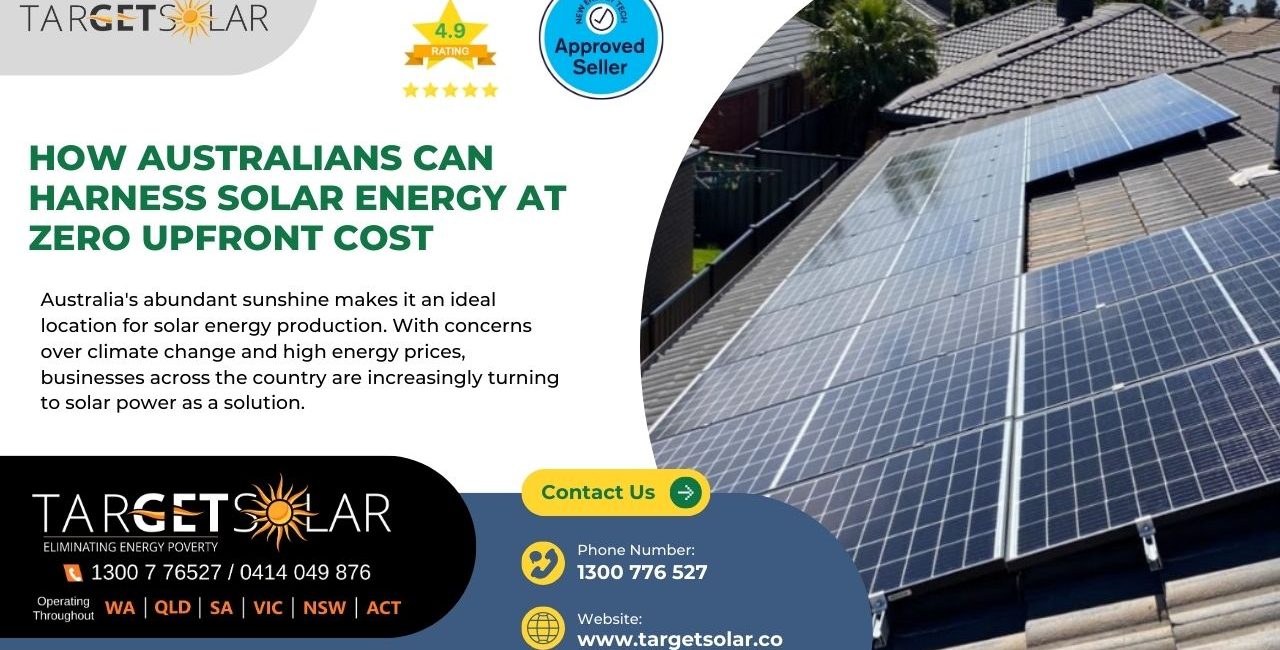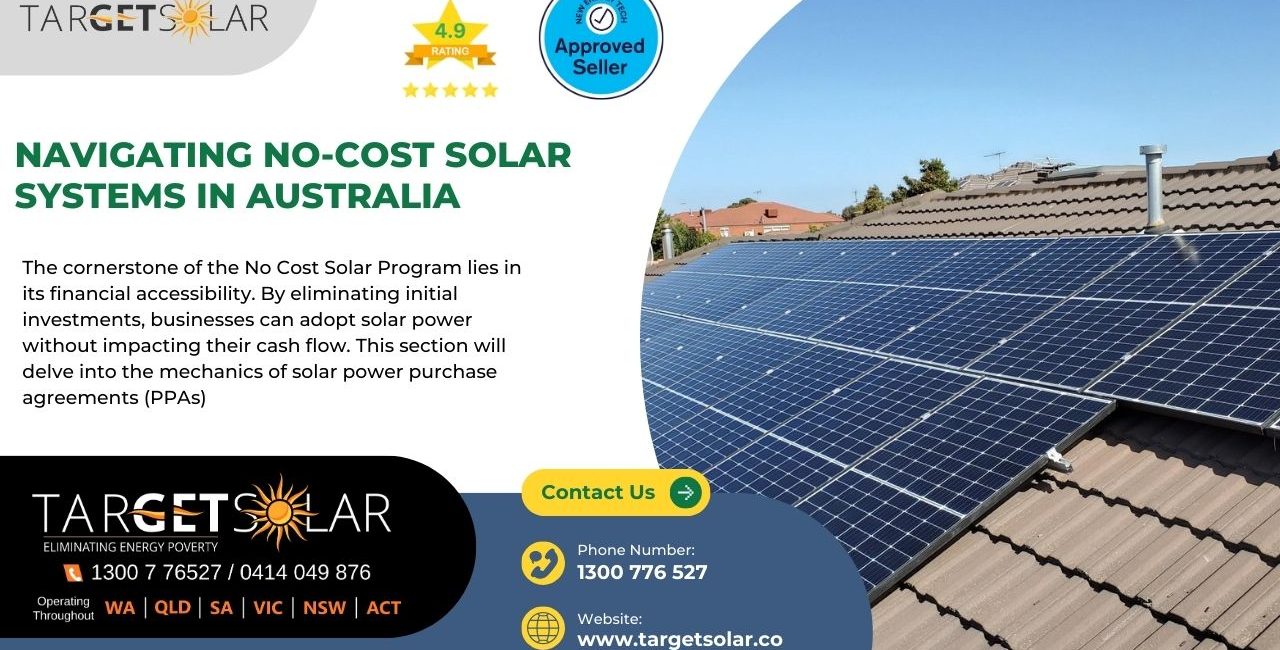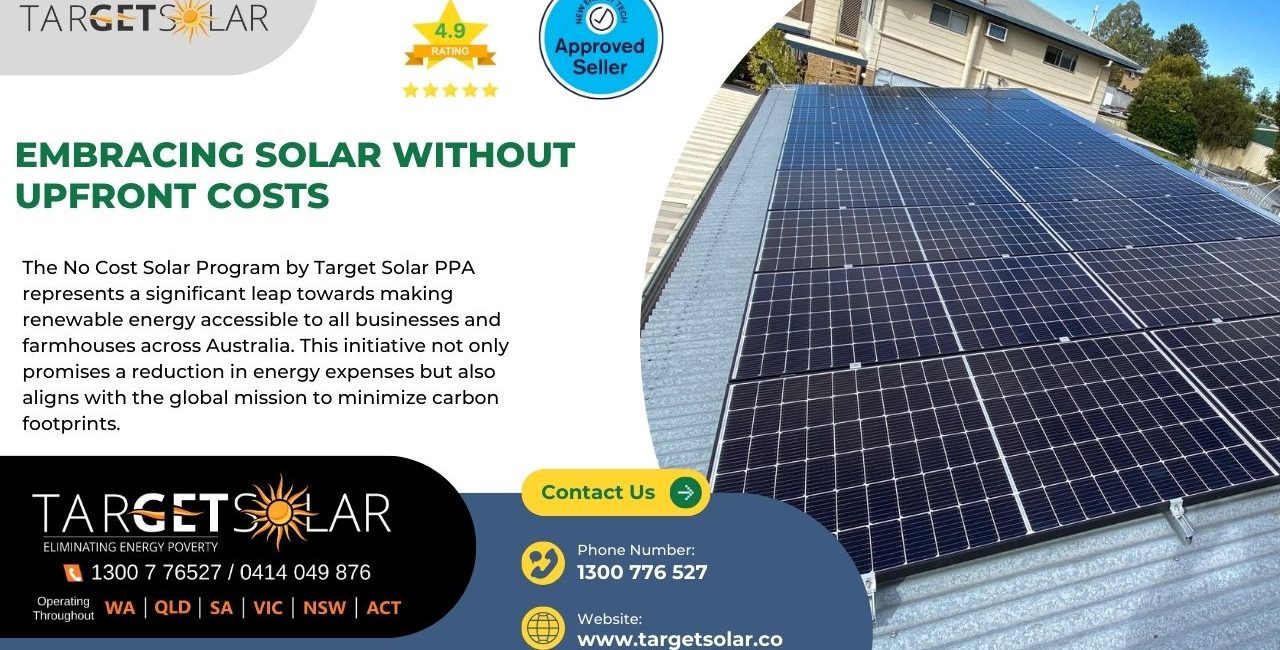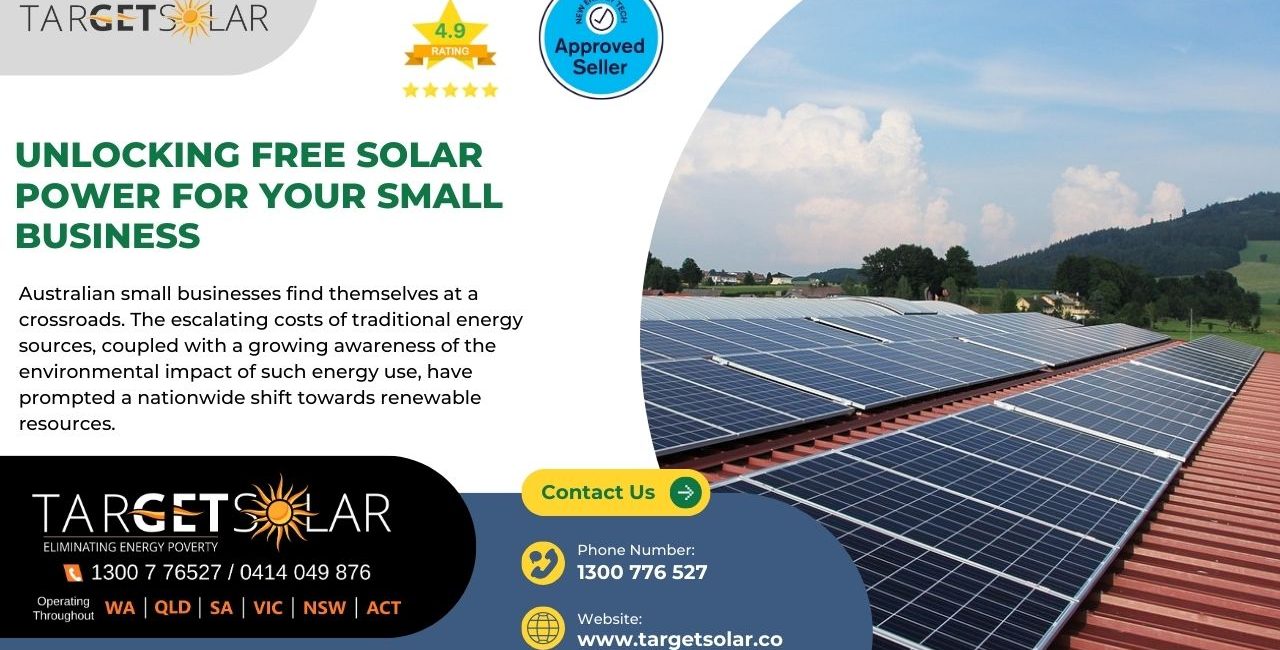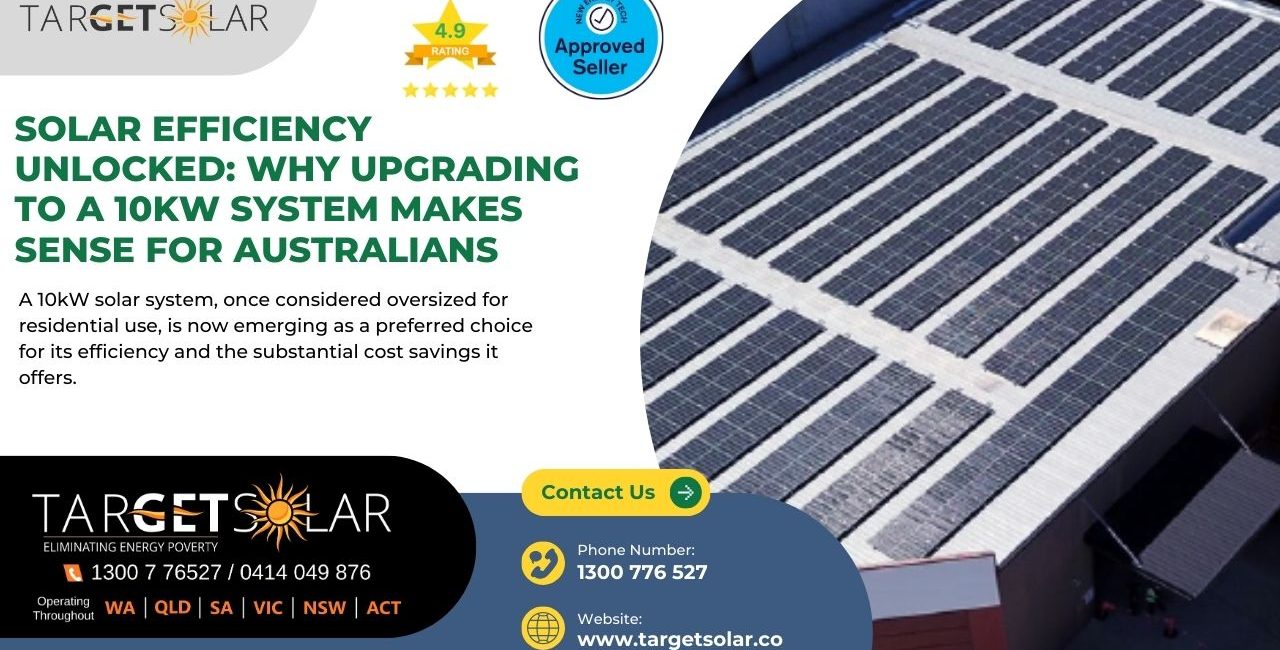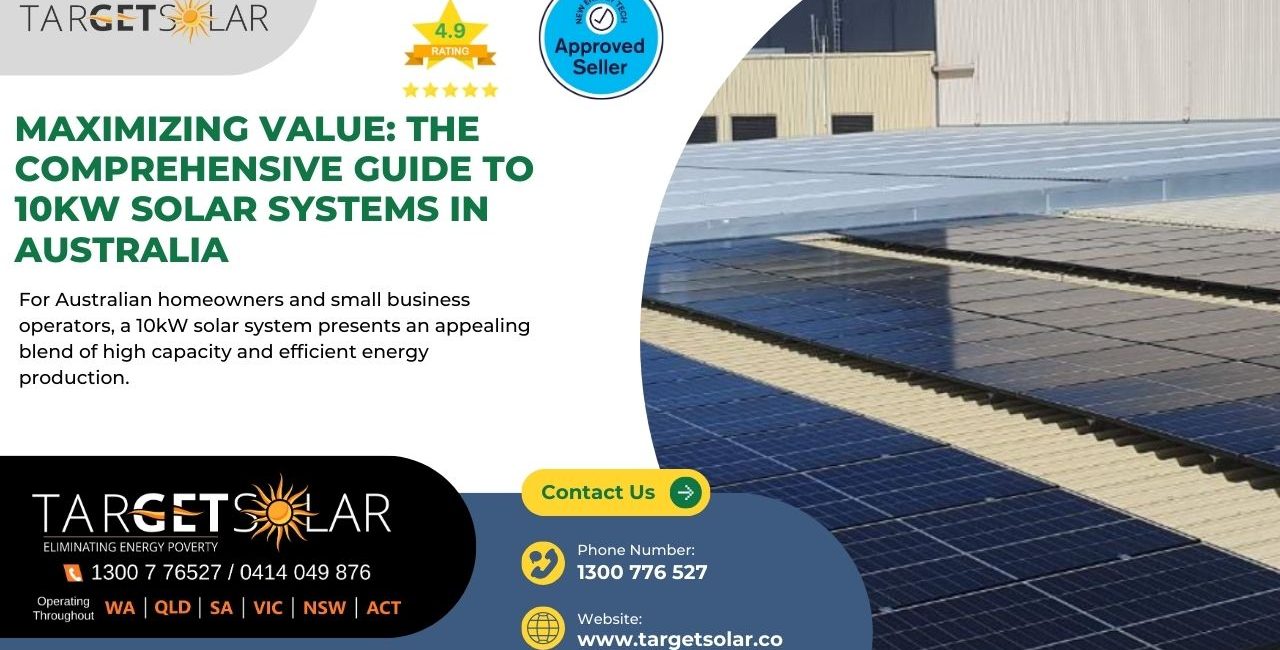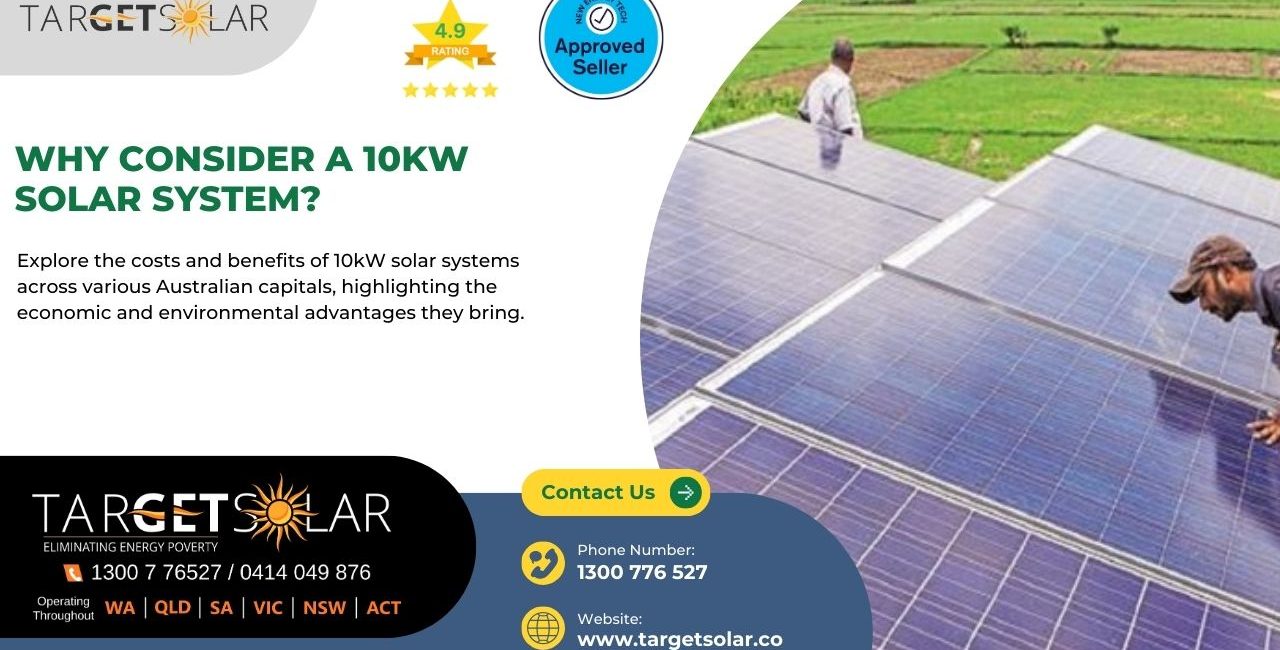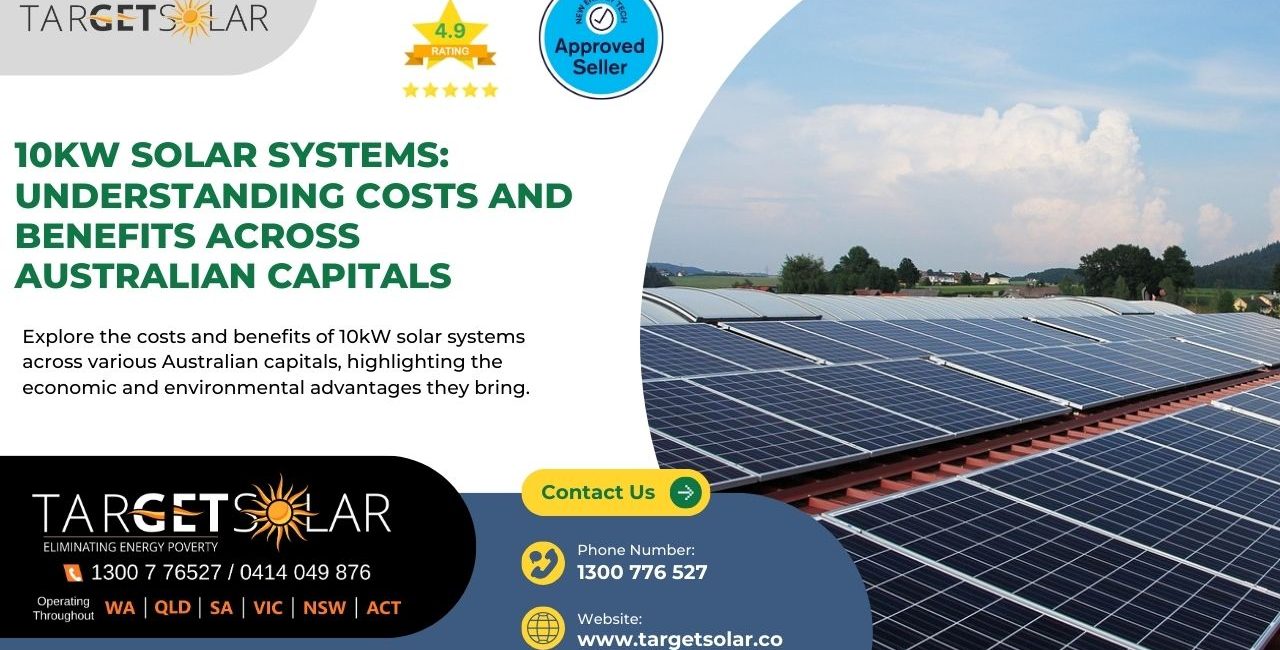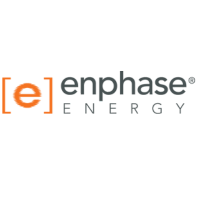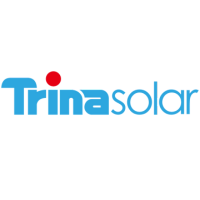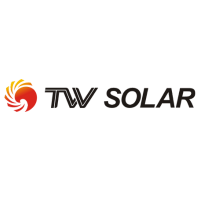Our Trusted Partner
A 6.6 kW solar system can reduce your energy costs by up to 80%.
6.6 kW Solar System is Suitable for Small Families
Who Should Consider a 6.6 kW Solar System?
Small families that make use of the following appliances and utilities will find a 6.6 kW solar system particularly beneficial:
| Air Conditioning | Refrigerator | Washing Machine | Dishwasher |
| Computers and Laptops | Small Appliances | Charging Stations for Devices | Fans and Ventilation |
| Water Heater | Home Office Equipment | ||
Right Steps for Your Solar Journey
Contact Us
Contact us today to begin your journey towards clean, renewable energy.
Initial Consultation
The process starts with an initial consultation where we understand your energy needs, goals, and site-specific requirements.
System Design
Based on our assessment, we design a customized solar system tailored to your specific needs.
Proposal and Contracting
We present a comprehensive proposal detailing the system design, projected energy savings, financial analysis, and cost estimates.
DNSP Approval
We manage the Distribution Network Service Provider (DNSP) approval process, ensuring compliance with local grid requirements.
Procurement of Materials
We procure high-quality solar components, ensuring everything is ready for the installation.
Installation
Our expert team installs the solar system, adhering to the highest industry standards.
Handover & Project Closure
We conduct a thorough system inspection, provide all necessary documentation, and officially hand over the system to you.
Latest blogs
Discover the Latest in Solar Energy
A 6.6 kW solar system refers to a photovoltaic (solar) installation with a peak power output of 6.6 kilowatts (kW) under optimal conditions, such as full sunlight. This number represents the maximum power capacity of the system, essentially indicating how much energy it can generate when performing at its peak.
Components of a 6.6 kW Solar System
A typical 6.6 kW solar system will include:
Solar Panels: These are the primary components that convert sunlight into direct current (DC) electricity. The cumulative power rating of these panels should be 6.6 kW.
Inverter: The 6.6 kW inverter converts the DC electricity produced by the solar panels into alternating current (AC) that can be used in your home or fed back into the grid.
Racking and Mounting Equipment: These are used to securely attach the solar panels to your roof or other suitable surfaces.
Electrical Components: These include wiring, switches, and meters to properly channel the electricity where it needs to go.
Battery (Optional): Some 6.6 kW solar systems also come with an optional battery, which allows for the storage of excess electricity for later use.
Power Output and Energy Production
It’s important to note that the term “6.6 kW” refers to the system’s peak power output. The actual energy production in kilowatt-hours (kWh) can vary based on many factors, including geographical location, weather conditions, and roof angle. Theoretically, a 6.6 kW solar system can produce up to 6.6 kWh of energy in one hour under optimal conditions. However, real-world conditions like cloud cover, shade, and system inefficiencies may reduce this output.
Applications and Suitability
A 6.6 kW solar system is generally considered sufficient for medium-sized households with moderate electricity consumption. Depending on various factors like location and electricity usage patterns, such a system can significantly reduce electricity bills and provide a good return on investment.
Converting 6.6 kW to Other Units
For those curious about conversions, 6.6 kW is equivalent to approximately 8.86 horsepower (HP) or 8.83 brake horsepower (BHP). These units are often used in the automotive industry and aren’t directly applicable to solar energy but are good to know for a broader understanding of power units.
By understanding these key aspects, you’ll be better equipped to make an informed decision about whether a 6.6 kW solar system is the right fit for your needs.
Understanding the intricacies of a solar energy system can be confusing, especially when bombarded with technical jargon. In this section, we will break down the essential terms such as “6.6 kW,” “6.6 kWh solar system,” “6.6 kW to kWh,” “6.6 kW inverter,” “6.6 kW system,” and “6.6 kW AC” to help you make an informed decision.
Understanding 6.6 kW and 6.6 kWh Solar System
The term “6.6 kW” refers to 6.6 kilowatts, a unit of power that represents the system’s peak capacity. It’s what the solar system can generate at its maximum performance under optimal conditions. On the other hand, “6.6 kWh” (kilowatt-hours) refers to the amount of energy a 6.6 kW solar system can produce over one hour under the same optimal conditions.
6.6 kW to kWh: The Conversion
If you’re puzzled by what “6.6 kW to kWh” means, you’re not alone. In essence, this phrase signifies the conversion of a unit of power (kW) to a unit of energy (kWh) over time. A 6.6 kW solar system can theoretically produce 6.6 kWh of energy in an hour under optimal conditions, such as ideal sunlight and temperature. But remember, real-world conditions usually vary.
The Role of the 6.6 kW Inverter
An inverter is an essential component of any solar system. A “6.6 kW inverter” is designed to handle the maximum power output of a 6.6 kW solar system. It converts the direct current (DC) generated by the solar panels into alternating current (AC) for household use or to feed back into the grid.
The 6.6 kW System and 6.6 kW AC
When referring to a “6.6 kW system,” we’re talking about the entire setup that includes solar panels, an inverter, and additional components all designed to operate at a peak power output of 6.6 kW. The term “6.6 kW AC” specifically refers to the alternating current output that can be utilized by your home’s electrical system or sent back to the electrical grid.
By grasping these key terms, you’re better equipped to understand the nitty-gritty details of a 6.6 kW solar system, whether you’re looking at prices in Melbourne or in Adelaide, or even contemplating a hybrid 6.6 kW system with a battery. In the next section, we’ll delve into whether a 6.6 kW solar system is big enough for your home and how it translates into horsepower or even volts.
Want to know more about how a 6.6 kW solar system can meet your energy needs? Talk to our expert for a free consultation, quotation, and energy audit.
Read what our satisfied customers have to say in our Google reviews.
When it comes to solar systems, one of the most frequently asked questions is, “Is a 6.6 kW solar system big enough?” The answer largely depends on various factors, including your household’s energy consumption, your location, and even the angle of your roof. Here, we delve into key points like the 6.6 kW solar system output and 6.6 kW solar system energy production to help you assess whether this setup meets your needs.
Is a 6.6 kW Solar System Big Enough?
A 6.6 kW solar system is generally considered a good fit for medium-sized households with moderate energy consumption. However, it’s essential to match your system’s size with your actual energy needs. A 6.6 kW solar system with a 5kW inverter, for instance, will manage your energy more efficiently, allowing more power to be used or stored. If you’re contemplating adding a solar battery for off-grid capabilities, a 6.6 kW solar system with battery will require adequate space and investment but will provide you with stored energy for use during non-sunny hours.
6.6 kW Solar System Output and Energy Production
The 6.6 kW solar system output is its peak power production under ideal conditions. However, real-world factors like shading, orientation, and temperature can affect this. In terms of energy production, theoretically, a 6.6 kW solar system can produce up to 6.6 kWh in an hour under optimal conditions. But again, your geographical location and other variables will come into play.
How Many kWh Does a 6.6 kW Solar System Produce?
A common query is, “How many kWh does a 6.6 kW solar system produce?” The simple answer is up to 6.6 kWh in an hour under ideal conditions. However, in most real-world scenarios, you can expect around 80-90% efficiency due to various factors like cloud cover and angle of incidence. Based on this, a 6.6 kW system might produce around 25-30 kWh per day, which translates to approximately 750-900 kWh per month.
By understanding the 6.6 kW solar system output and energy production, you’ll be better positioned to assess whether this system size fits your household needs, whether you’re in Melbourne, Brisbane, or Adelaide. If you’re concerned about the price for a 6.6 kW solar system, remember that solar energy can offer substantial savings on your electricity bills over time.
Do you have more questions or want a customized solution? Talk to our expert for a free consultation, quotation, and energy audit.
Don’t forget to check out our glowing reviews on Google for firsthand accounts of our reliable service and quality installations.
Overview of the Price for a 6.6 kW Solar System
When it comes to the cost of a 6.6 kW solar system, prices can range from $5,000 to $7,000 for a good quality system. Though cheaper components are available, opting for quality pays off in the long run by avoiding frequent repairs and short equipment lifespans.
Factors influencing the final cost include:
- Hours of sunshine hitting your roof
- Roof angle and any extra mounting needed
- The impact of shade on performance
- Your energy requirements
The Inverter’s Role
The inverter is a crucial part of any solar system, converting sunlight into usable AC electricity. A 6.6 kW solar system with a 5kW inverter is a popular configuration. Brands like Fronius, known for their Fronius Primo and Fronius Symo inverters, offer high-end, reliable options.
Regional Pricing Insights
Pricing can vary by region. For instance, a 6.6 kW solar system price in Melbourne might differ from the 6.6 kW solar system price in Brisbane, Adelaide, Victoria, or Perth. The local solar installation market and regional incentives can impact these costs.
Government Subsidies
You’ll be pleased to know that 6.6 kW systems are pre-approved throughout Australia for grid connection, allowing immediate surplus electricity earnings. Government subsidies could add up to $3,250 or more, significantly reducing the system’s cost.
Do I Need Battery Backup?
Considering a 6.6 kW solar system with battery? Battery systems typically cost between $1,300 to $2,000 per kWh, meaning a backup for a 6.6 kW system might cost around $7,000 to $10,000.
How Much Will a 6.6 kW Solar System Save Me?
Estimating the savings involves several factors, including your electricity consumption and the system’s energy production. On average, a 6.6 kW system could produce 25-30 kWh/day. Savings can add up quickly, especially if you generate more energy than you consume, allowing you to sell the surplus back to the grid. We aim to design systems with 100% payback in less than 4 years.
Benefits of 6.6 kW Solar with Battery
Installing a battery alongside your 6.6 kW solar system offers several advantages. The most obvious is energy storage for use during nighttime or cloudy days, enhancing your system’s overall efficiency. A 6.6 kW solar system with battery also allows you to be less dependent on the grid, giving you energy security during outages. Furthermore, stored energy can be sold back to the grid during peak hours, increasing your ROI.
Cost of 6.6 kW Solar System with Battery
The cost of a 6.6 kW solar system with battery varies based on the type and capacity of the battery. As mentioned earlier, the average cost for a solar battery is between $1,300 to $2,000 per kWh. Thus, adding a battery system could bring the total cost of a 6.6 kW solar system with battery to around $12,000 to $17,000, depending on various factors like brand, installation, and regional costs.
Sungrow 9.6 kWh Battery Price and Review
Is it Compatible with a 6.6 kW System?
The Sungrow 9.6 kWh battery is a popular choice for those looking to add storage to their solar systems. Pricing for this specific battery may vary, but you can expect to invest a significant amount for this high-capacity option.
Compatibility: Yes, the Sungrow 9.6 kWh battery is generally compatible with 6.6 kW solar systems. In terms of functionality, a 9.6 kWh battery can store a large amount of the energy generated by a 6.6 kW solar system, making it an excellent match for those wanting extended off-grid capabilities.
Sungrow 9.6 kWh Battery Review
Sungrow batteries are known for their durability and efficiency. Users often praise their seamless integration with existing solar systems and smart energy management features. Overall, the Sungrow 9.6 kWh battery is considered a premium option compatible with 6.6 kW solar systems, offering high storage capacity and reliability.
Is It Possible to Add a Battery to an Existing Solar System?
Yes, it is generally possible to add a battery to an existing solar panel system. This is commonly referred to as a “retrofit.” The process involves connecting a compatible energy storage battery to your existing solar installation, allowing you to store excess electricity for later use rather than sending it back to the grid.
Power Conversion Metrics
6.6 kW to hp, 6.6 kW to bhp, 6.6 kW to Horsepower
The term kW stands for kilowatt, a unit of power. When converting 6.6 kW to horsepower (hp), it’s important to note that 1 kW is approximately equal to 1.341 hp. So, 6.6 kW would be about 8.85 hp.
The term bhp stands for brake horsepower, which is the engine’s output before losses like friction. The conversion rate from kW to bhp is very similar to that for hp. In summary, 6.6 kW to bhp is roughly 8.85 bhp.
6.6 kW to Volts, 6.6 kW to Amps 240V
Power (P) in kW can be expressed as the product of current (I) in amps and voltage (V) in volts, given by the formula P = IV. If you are operating at 240 volts, you can convert 6.6 kW to amps 240V by rearranging the formula as I = P/V. In this case, I = 6600W/240V, which is approximately 27.5 amps.
Electric Vehicle Charging: 6.6 kW AC Charger
Relevance in Electric Vehicle Charging
A 6.6 kW AC charger is commonly used for electric vehicle (EV) charging stations, including for popular models like the Tesla Model 3, Rav4 Prime, and Lexus. A charger of this capacity generally offers Level 2 charging, which is faster than standard household outlets but not as fast as DC fast chargers.
Compatibility with Popular Models
Tesla Model 3: A 6.6 kW AC charger is compatible and will take about 8 hours for a full charge, assuming the battery is empty.
Rav4 Prime: Similar to the Tesla, a 6.6 kW AC charger will fully charge the Rav4 Prime in about 8-10 hours depending on the state of the battery.
Lexus: Depending on the model, a 6.6 kW AC charger can also be used to fully charge a Lexus electric vehicle in approximately 8-10 hours.
By understanding these metrics and conversions, you can better determine the compatibility of a 6.6 kW solar system with various electric vehicle models and make more informed decisions about conversions and compatibility in different scenarios.
Would you like to know more about another aspect of 6.6 kW systems? Feel free to ask!
Best 6.6 kW Solar System
When talking about the best 6.6 kW solar system, several factors like efficiency, warranty, and brand reputation come into play. A well-designed 6.6 kW system should meet your energy needs, provide a good return on investment, and come with a reliable warranty.
Specific Brands and Models
6.6 kW Solar System Fronius
The Fronius brand is renowned for its high-quality inverters, and they often offer systems around the 6.6 kW mark. Their products are generally efficient and reliable, making a Fronius 6.6 kW solar system a strong contender for one of the best systems available. Fronius inverters are particularly known for their smart grid compatibility and extensive warranty.
LG 6.6 kW Solar System
LG is another high-end brand that offers a 6.6 kW solar system. LG is known for its efficient solar panels, often reaching efficiencies over 20%. Their solar systems also come with a strong warranty and excellent customer service. LG’s solar products are generally more expensive, but they are considered some of the best in terms of quality and reliability.
Price Considerations
When discussing price for a 6.6 kW solar system, it’s crucial to look at your location. For example, the 6.6 kW solar system price in Melbourne might differ significantly from the 6.6 kW solar system price in Brisbane or Adelaide due to factors like installation costs and government incentives. Prices can range widely, from $5,000 to $12,000 depending on the brand and additional features like a battery backup.
Solar Systems with Battery Backup
Adding a battery backup like a Sungrow 9.6 kWh battery can increase the initial investment but offers the benefit of energy storage for use during peak times or outages. It’s essential to review whether the battery is compatible with the 6.6 kW system you’re considering, which often it is.
By understanding the top brands and models, you can make an informed decision about which 6.6 kW solar system to install. Whether you choose a Fronius or LG system, ensure it meets your energy needs and budget.
Solar Panels 6.6 kW Installation
Solar panels 6.6 kW installation involves several key steps, from the initial consultation to the final handover and testing. Given that a 6.6 kW system typically involves around 18 to 24 panels, adequate roof space is necessary. In addition to physical installation, electrical work, including inverter installation and grid connectivity, is also part of the process.
Regional Installation Insights
6.6 kW Solar System Melbourne
In Melbourne, solar panel installations often benefit from state-specific incentives and rebates, making it more financially appealing for residents. The area’s climate, with its moderate sunlight, makes it suitable for solar energy generation.
6.6 kW Solar System Ballarat
In Ballarat, colder temperatures mean a more moderate energy yield but also more efficient operation of the solar panels. The region often sees fewer solar installations compared to Melbourne, making it relatively easier to book an installer in short notice.
6.6 kW Solar System Sydney
Sydney has a more solar-friendly climate with more sunny days, allowing for higher energy yield. Government rebates and incentives are also available in this region. However, due to the high demand for solar installations, advance booking for an installer is often necessary.
Installation Process with Target Solar’s Project Management
Consultation
The first step with Target Solar involves a consultation to assess your property’s suitability for a solar system and understand your energy needs.
Planning and Design
Based on the consultation, Target Solar’s engineers will design a customized 6.6 kW solar system that suits your home’s layout and your energy consumption profile.
Permitting and Approvals
Target Solar will handle all necessary permits and approvals, ensuring compliance with local regulations and grid requirements.
Installation
Skilled technicians will then install the solar panels, inverters, and any additional components like a battery system.
Testing and Commissioning
After installation, the system undergoes rigorous testing to ensure it’s operational and safe.
Handover
Once everything is set, Target Solar will hand over the system to you, complete with all warranties and documentation, and guide you through the operation of your new solar system.
By following a meticulous project management plan as outlined by a reputable provider like Target Solar, you can ensure a smooth and effective installation of your 6.6 kW solar system, regardless of your location.
Latest Components and Features for 6.6kW Solar System
High-Efficiency Solar Panels: Opt for monocrystalline panels with efficiencies above 20% for maximum energy generation.
Solar Inverters: Go for smart inverters that not only convert DC to AC but also offer features like remote monitoring, easy integration with other home automation systems, and grid-tied functionalities.
Solar Battery Storage: Lithium-ion batteries with high energy density are the gold standard for storing excess solar energy for later use.
Micro-Inverters: For larger installations, consider micro-inverters that optimize the performance of each individual panel, maximizing overall efficiency.
Energy Management Software: Invest in a platform that allows for real-time tracking of energy production, consumption, and storage. This enables you to make data-driven decisions on energy use.
Smart Grid Compatibility: Systems that can feed back into the grid or draw from it as needed are highly recommended. This enables you to sell excess power back to the grid and draw power when solar production is low.
Automated Maintenance Alerts: Modern systems can detect and alert you to performance issues, simplifying the maintenance process.
Importance of Pairing the Right Inverter
The importance of choosing the right inverter for your solar system cannot be overstated. The inverter is the device that converts the DC electricity generated by the solar panels into AC electricity that can be used in your home or fed back into the grid. A mismatched inverter can lead to inefficiencies, reduced lifespan of the system, or even safety concerns.
6.6 kW Solar System with 5 kW Inverter
It’s common to pair a 6.6 kW solar system with a 5 kW inverter. The reason being, solar panels rarely operate at their maximum output due to various factors like weather conditions, angle of incidence of sunlight, and temperature. A 5 kW inverter can often handle the fluctuating output from a 6.6 kW solar system efficiently, ensuring that most of the electricity generated is either used or fed back into the grid.
Sungrow 6 kW Hybrid Inverter
The Sungrow 6 kW hybrid inverter is a versatile option often used in solar installations. It is designed to manage both the solar panel system and energy storage in a single unit. This makes it a convenient choice for those who are also considering adding a battery system to their solar setup.
Compatibility
The Sungrow 6 kW hybrid inverter is highly compatible with a 6.6 kW solar system. Its capacity closely matches the maximum output of a 6.6 kW system, ensuring minimal loss of energy. Being a hybrid inverter, it also gives you the flexibility to easily add a battery to your system at a later stage, should you choose to do so.
By carefully choosing the right inverter, you can maximize the efficiency, reliability, and longevity of your 6.6 kW solar system. Companies like Sungrow offer versatile inverters that not only match the capacity of your solar panel system but also offer the flexibility to expand your system in the future.
Solar-Ready EV Charging Stations: If you own or plan to own an electric vehicle, integrating a solar-ready EV charging station can be a smart move.
Solar Water Heaters: Augment your solar system with a solar water heater to further reduce your electricity consumption.
Load Controllers: These can shift power-intensive activities to times when solar generation is at its peak, optimizing your energy use.
Backup Generator: For areas prone to outages, a solar-compatible backup generator can provide an extra layer of security.
Demand Response Programs: These are incentives from energy providers that offer reduced rates for allowing them to draw from your battery during peak demand periods.
Time-of-Use Shifting: Use your solar battery strategically to take advantage of lower electricity rates during off-peak hours.
AI-Powered Analytics: Advanced analytics powered by Artificial Intelligence can forecast your energy production based on weather data, helping you plan your energy use more effectively.
Smart Home Hub: This serves as the brain of your smart home ecosystem, allowing all your smart devices to communicate with each other. When integrated with your solar solution, it can make real-time adjustments to optimize energy usage.
Smart Thermostats: These can be programmed to adjust heating or cooling based on when your solar panels are generating the most electricity, thus saving energy and money.
Intelligent Lighting: Smart lights can be scheduled or triggered by sensors to turn on or off, ensuring that you’re using electricity only when necessary.
Appliance Control: Smart plugs and switches can turn off appliances automatically during periods of low solar production and turn them on when excess energy is being generated.
Automated Blinds and Windows: During sunny days, automated blinds could open up to let natural light in, reducing your need for artificial lighting. Conversely, they could close to keep your home cool during hot afternoons, reducing your reliance on air conditioning.
Energy Monitoring: Real-time energy monitoring can be viewed directly on your smartphone. This can provide insights into your energy habits and help you make smarter decisions.
Security Systems: Solar-powered security cameras and sensor lights can be included in your home automation system, providing an extra layer of security while being energy-efficient.
FAQs on 6.6 kW solar systems
A 6.6 kW solar system typically consists of around 18-24 solar panels that generate a total capacity of 6.6 kilowatts (kW). These systems are suitable for residential settings and can cover the energy needs of an average-sized household.
A 6.6 kW solar system can produce approximately 26-30 kilowatt-hours (kWh) of electricity per day depending on geographic location, orientation of panels, and other factors.
When converting 6.6 kW to horsepower (HP), 1 kW is approximately equal to 1.341 HP. So, a 6.6 kW solar system would produce roughly 8.85 HP.
When converting 6.6 kW to brake horsepower (BHP), the conversion factor is roughly the same as HP, making it approximately 8.85 BHP.
On an average day, a 6.6 kW solar system could produce around 26-30 kWh.
In most cases, a 6.6 kW solar system is big enough for a medium-sized household. However, energy needs can vary greatly.
The price for a 6.6 kW solar system can vary between $5,000 to $12,000 depending on the location and components used.
Yes, you can use a 6.6 kW solar system with a battery, often a Sungrow 9.6kWh battery, to store excess energy.
In Melbourne, the 6.6 kW solar system price with a battery can range from $6,000 to $18,000.
In Brisbane, a 6.6 kW solar system would cost around $5,000 to $12,000.
In Adelaide, a 6.6 kW solar system usually costs between $5,000 to $12,000.
A 6.6 kW solar system with a 5 kW inverter performs well since solar panels rarely operate at maximum output.
In Victoria, the 6.6 kW solar system price ranges from $6,000 to $12,000 depending on the quality of the components.
The best 6.6 kW solar system brands include Fronius and LG. Specifically, models like 6.6 kW solar system Fronius and LG 6.6 kW solar system are highly regarded.
The 6.6 kW solar system output can vary but is generally around 26-30 kWh per day.
In Sydney, the 6.6 kW solar system price typically ranges from $5,000 to $12,000.
Yes, a 6.6 kW AC charger is commonly used for electric vehicles like Tesla Model 3, Rav4 Prime, and Lexus.
A 6.6 kW charger is compatible with Tesla Model 3 and provides moderate-speed charging for the vehicle.
Yes, a 6.6 kW charger is compatible with the Rav4 Prime and would provide a moderate charging speed.
A 6.6 kW charger at 240V would use approximately 27.5 Amps.
A 6.6 kWh battery can store 6.6 kilowatt-hours of electrical energy for later use.
A 6.6 kW hybrid solar system combines solar panels with battery storage, typically using a hybrid inverter like a Sungrow 6 kW hybrid inverter.
Yes, a 6.6 kW inverter would be closely matched to a 6.6 kW solar system, providing good efficiency.
You would need approximately 18-24 solar panels for a 6.6 kW solar system depending on the wattage of each panel.
The solar panels 6.6 kW installation process involves consultation, design, physical installation, testing, and handover. Firms like Target Solar specialize in perfect solar project management from start to finish.
In Melbourne, Ballarat, and Sydney, the 6.6 kW solar system installation costs are fairly consistent, ranging from $5,000 to $12,000.
The time it takes to charge a car with a 6.6 kW charger depends on the car’s battery capacity, but usually, it can fully charge an electric vehicle in about 4-8 hours.
6.6 kW OBC stands for On-Board Charger, which is integrated into the car and is responsible for converting AC power from the wall outlet to DC power for the car’s battery.
In Ballarat, a 6.6 kW solar system can produce approximately 20-25 kWh per day depending on various factors like weather conditions and angle of panels.
In Perth, the 6.6 kW solar system energy production can be quite high, often exceeding 30 kWh per day due to more abundant sunshine.
6.6 kW to volts conversion is not straightforward because kW is a unit of power, while volts is a unit of electric potential. To relate the two, you would also need to know the current (Amps).
In Adelaide, the cost of a 6.6 kW solar system with battery can range from $6,000 to $18,000 depending on the make and model of the solar panels and the battery system.
A 6.6 kW AC charger refers to an Alternating Current charger with a 6.6-kilowatt output, commonly used for electric vehicles.
A 6.6 kW charger amps would pull around 27.5 amps if you are using a 240V power source.
6.6 kW in HP converts to approximately 8.85 HP.
To convert 6.6 kW to Amps at 240V, you would use the formula Power (kW) = Voltage (V) × Current (A). For 6.6 kW at 240V, it would be 27.5 Amps.
In Perth, the 6.6 kW solar system price could be between $7,000 to $11,000 depending on various factors like installation and type of panels used.
In terms of metric horsepower, 6.6 kW in PS is approximately 8.95 PS (Pferdestärke).
6.6 kW to kWh conversion involves multiplying the 6.6 kW by the number of hours the system runs. For example, if it runs for 4 hours, it would produce 26.4 kWh of energy.
Both Melbourne and Sydney have similar 6.6 kW solar system prices, but the energy production may be slightly higher in Sydney due to more frequent sunshine.
The savings from a 6.6 kW solar system depend on your local electricity rates, but typically, you could save around $1,000 to $2,000 annually on your energy bills.
6.6 kW in CV (cheval vapeur) is approximately 8.95 CV, which is almost similar to PS.
A 6.6 kW solar system typically contains more solar panels or panels of higher capacity than a 5 kW system. As a result, it can potentially generate more electricity, offering more savings on your electricity bills.
For a 6.6 kW solar installation, you’d typically need around 40 square meters of roof space. However, this can vary depending on the size and efficiency of the solar panels you choose.
A 6.6 kW solar system usually consists of about 20 panels, assuming each panel is 330W. But the exact number can differ based on the wattage of individual panels.
The payback period for a 6.6 kW solar system can vary based on your electricity usage, local electricity rates, and sunlight exposure. Typically, homeowners see a return on investment in 3 to 6 years.
All solar systems, including 6.6 kW, require minimal maintenance. It’s recommended to check the system annually for dirt and debris, ensuring optimal performance. Some homeowners also opt for professional inspections every few years.
A 6.6 kW solar system can be used for small commercial operations. However, larger businesses or facilities might require a system with a greater capacity to meet their energy needs.
While not mandatory, a battery storage system paired with a 6.6 kW solar system can store excess energy for use during the night or cloudy days, optimizing the benefits of your solar installation.
Yes, if your roof space and the local regulations permit, you can expand your existing system to 6.6 kW by adding more panels or replacing older panels with more efficient ones.
Installing a 6.6 kW solar system can reduce your carbon footprint significantly. On average, such a system can offset around 6 to 9 tonnes of CO2 emissions annually, which is equivalent to planting several hundred trees.
While a 6.6 kW solar system performs best in areas with abundant sunlight, modern solar panels are designed to capture light even on cloudy days. However, in areas with limited sunlight, energy output might be reduced, lengthening the payback period.
Trust in the Experience of Others!
Considering a solar solution with us?
With over 190+ glowing Google reviews, discover why so many have chosen our expertise.
Your confidence in our service is paramount. See what others have to say and make an informed choice!
Why Target Solar?
- zero upfront cost
- Quick Installation
- Lifetime Warranty
- 24/7 Customer Support
- Cutting-edge Technology
- Smart Energy Management
- government rebates and tax incentives
Below is a table that matches different levels of monthly energy consumption with the recommended solar system size.
| Current Monthly Energy Consumption (kWh) | Recommended Solar System Size (kW) | Suitable For (Family Members) | Recommended for Appliances | Other Considerations |
|---|---|---|---|---|
| 0-300 | 3kW | 1-2 | Lights, Fans | Basic energy needs |
| 301-600 | 5kW | 2-4 | Lights, Fans, TV, Fridge | Moderate energy needs |
| 601-900 | 7kW | 3-5 | Lights, Fans, TV, Fridge, Dishwasher | High energy needs |
| 901-1200 | 9kW | 4-6 | Lights, Fans, TV, Fridge, AC, Dishwasher | High energy + 1 AC |
| 1201-1500 | 11kW | 5-7 | Lights, Fans, TV, Fridge, AC, Washing Machine | High energy + multiple ACs |
| 1501-1800 | 13kW | 6-8 | All of the above + Iron | High energy + heavy usage |
| 1801-2100 | 15kW | 7-9 | All of the above + Home Theater | Very high energy needs |
| 2101-2400 | 17kW | 8-10 | All of the above + Multiple ACs | Large families |
| 2401-2700 | 19kW | 8-10 | All of the above + Electric Vehicle Charging | EV owners |
| 2701-3000 | 21kW | 9-10+ | All of the above + Pool Pump | Pool owners |
| 3001-3300 | 23kW | 10+ | All of the above + Multiple Electric Vehicles | Multiple EVs |
| 3301+ | 25kW | 10+ | All of the above + Advanced Home Automation | Smart homes |
| 3301+ | Contact us for a custom solution | 10+ | All of the above + Industrial-grade Appliances | Custom solutions |
The table can serve as a guide to help you understand what size of solar system would be best suited for your needs based on your current monthly energy consumption and family size.
Quality Installation
Our Process
Quality Installation
Our Process
The roaring solar power demand in Australia is easy to understand why. Not only is it environment friendly, but also contributes a lot to cost-effectiveness.
Being specialists in solar, and keeping in mind, the efficiency of solar power systems, Target solar makes sure to power your home with a smooth hassle-free solar system installation process.
We, at Target Solar, take care of the end-to-end execution of solar power installation so that you enjoy the direct uninterrupted sunlight. Providing the best expert advisory solutions, our engineers design the most suitable configurations according to your requirement.
Keeping up to date with the latest industry trends, we offer premium solar panels with enhanced performance that stand as the most resilient source of energy, withstanding all the natural calamities. Apart from that, we adhere to various quality control procedures, so that you and your loved ones stay safe at your home in case of a natural disaster.
Why choose solar power installations at Home? Will it Payoff?
Why choose solar power installations at Home? Will it Payoff?
Embrace the clean, pure energy, harnessing the power of the sun! Switching to solar, not only creates an eco-friendly environment but also helps you to save more on electricity bills.
Rest, you can stay assured that your property is in safe hands with the most experienced solar installers and backed by an industry-leading power performance warranty.

Size of a Solar Power System
Planning to install a solar panel on your residential rooftop? The most significant factor, you need to consider before installing is the size that matches your energy consumption. The most popular size of the solar power system that perfectly fits an “average house” is between 5kW and 8kW.
The best-selling solar panels that are gaining popularity in the residential areas across Australia are 6.6 kW, 10 kW, 13.2 kW. Energy consumption depends on which place you are living, and currently which month of the year you are experiencing. Now you can save a good portion of your energy bill by installing solar panels of the proper size that generates ample solar energy to power your home.











